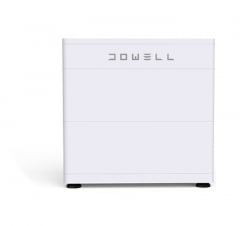

This research aims at a systematical review over the literature for ascertaining if iPACK block is able to take in extra analgesic advantage for present multimodal analgesia regimens after TKA. But it is controversial that whether iPACK block should add to the analgesia regimen (ACB included) in the patients after TKA. Local anesthetic is injected at that spot. After identifying the popliteal artery, the tip of needle is placed at the right middle part in the bone and the popliteal artery. The ultrasound transducer is laid for identifying the femoral condyle. Accordingly, a number of clinic doctors chose to make additional iPACK block to ACB to control postoperative pain. The recent ultrasound technique instructed local anesthetic infiltration of the interspace between the popliteal artery and the posterior knee capsule (iPACK block) has offered dramatic posterior knee analgesia. However, ACB cannot lead to a relieved posterior knee pain. ACB is usually conducted under ultrasound machines and local anesthetic is injected nearby the saphenous nerve in the adductor canal. Adductor canal block (ACB) is ever contributing an approach to femoral nerve block after TKA. However, relieving postoperative pains, following total knee arthroplasty is of vitally important to the postoperative recovery of the patients.Ĭurrently, ultrasound-guided adductor canal blocks (ACBs) perform an adjunct with multimodal pain protocol on the patients with TKA effectively minimize postoperative pain and narcotic consumption. According to the estimated project by the year 2030, 3.48 million TKAs will have been conducted on a yearly basis. Total knee arthroplasty (TKA) refers to a viable treatment asymptomatic osteoarthritis of the knee refractory to conservative measures. No difference was found between the patients in the ACB + iPACK Group and ACB Group on postoperative quadriceps muscle strength and the incidence of PONV. We found that patients' hospital stays in the ACB + iPACK Group were significantly shorter than in the ACB Group (95%CI:, P: 0.003). There were significant differences between the patients in the ACB + iPACK Group and ACB Group on the TUG test of POD1 and POD2. The patients in the group of ACB + iPACK performed better in the postoperative range of knee movement (95%CI:, P < 0.00001) and walking distance (95%CI:, P < 0.00001). A differential was discovered to support the ACB + iPACK Group when comparing the two groups on postoperative cumulative morphine consumption (95%CI:, P: 0.0007).

There are significant differences between the two groups in VAS score at rest and with activity, and the VAS scores were lower in the ACB + iPACK Group (VAS scores at rest: 95%CI, P < 0.00001. There are fourteen eligible studies for our meta-analysis.

The Creative Commons Public Domain Dedication waiver ( ) applies to the data made available in this article, unless otherwise stated in a credit line to the data. If material is not included in the article's Creative Commons licence and your intended use is not permitted by statutory regulation or exceeds the permitted use, you will need to obtain permission directly from the copyright holder. The images or other third party material in this article are included in the article's Creative Commons licence, unless indicated otherwise in a credit line to the material. Open AccessThis article is licensed under a Creative Commons Attribution 4.0 International License, which permits use, sharing, adaptation, distribution and reproduction in any medium or format, as long as you give appropriate credit to the original author(s) and the source, provide a link to the Creative Commons licence, and indicate if changes were made.


 0 kommentar(er)
0 kommentar(er)
